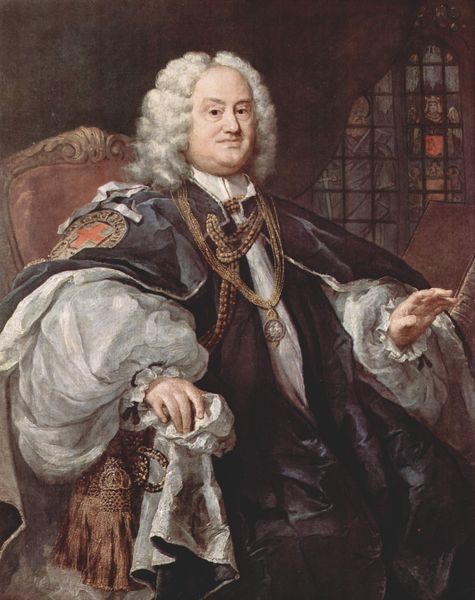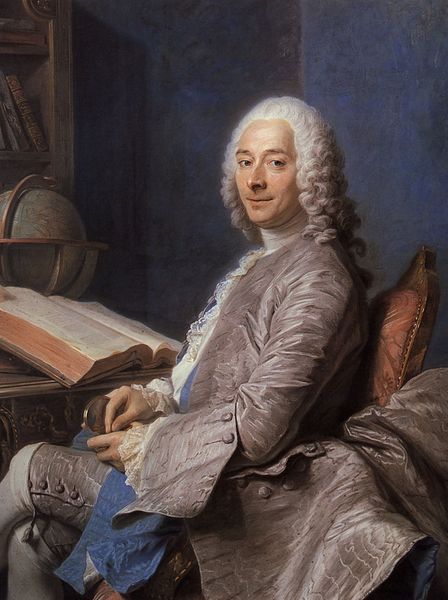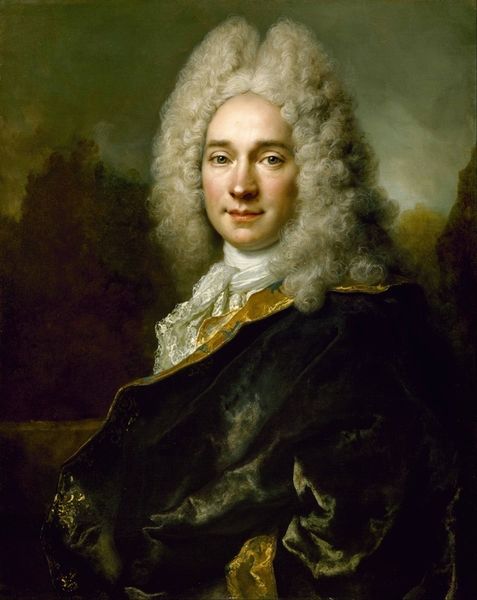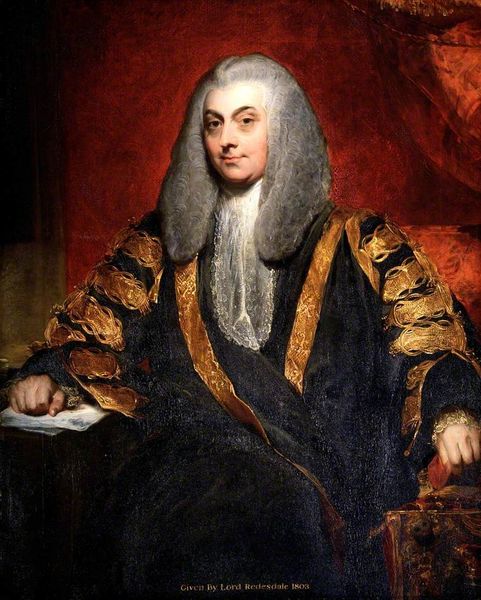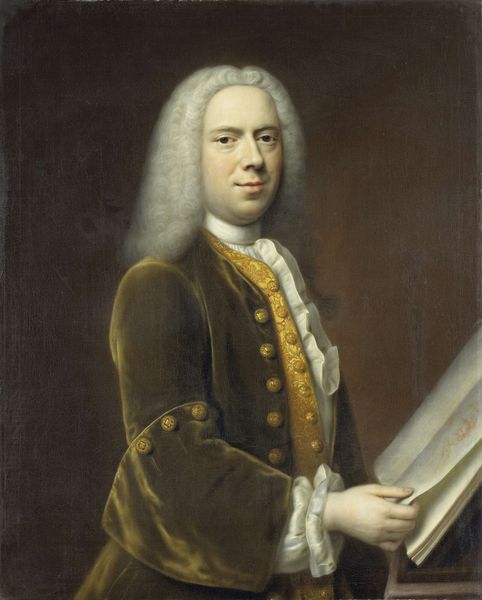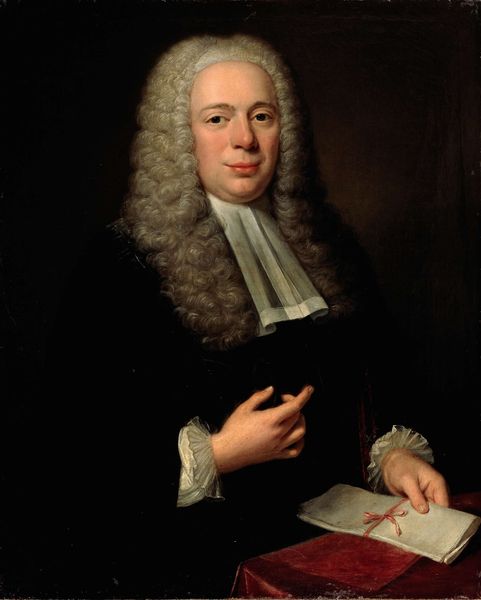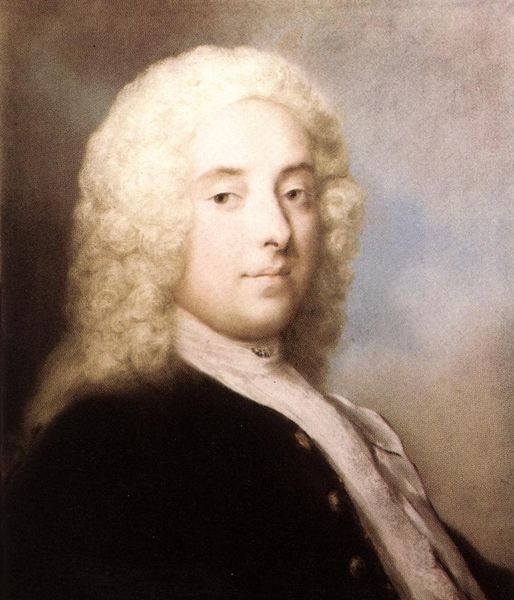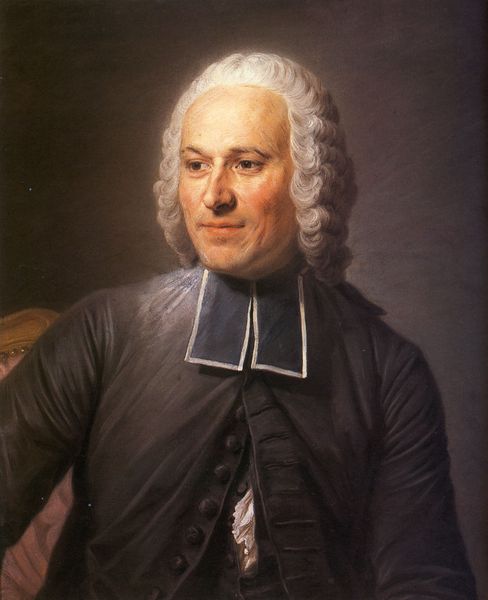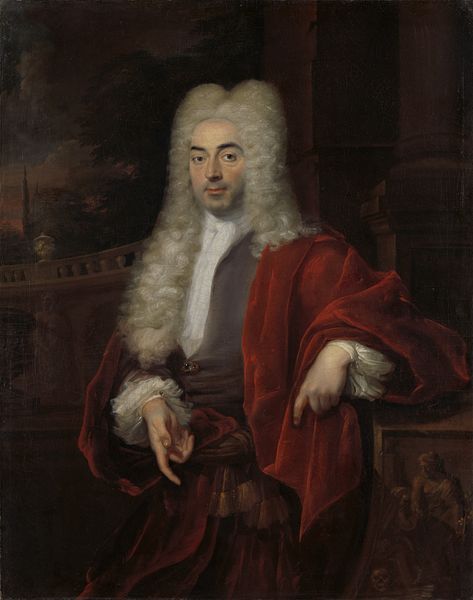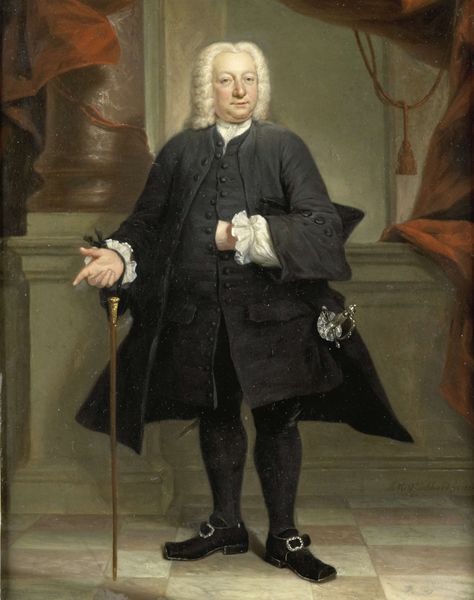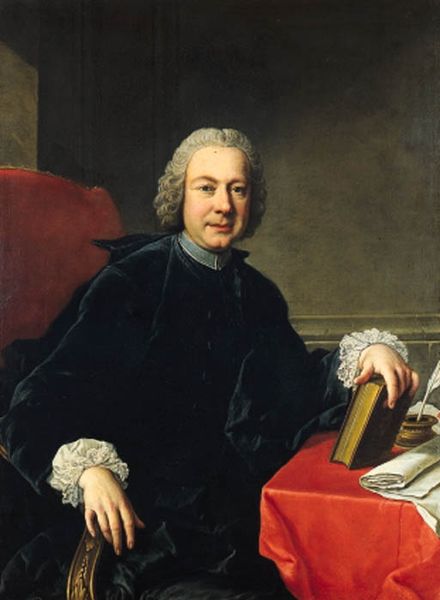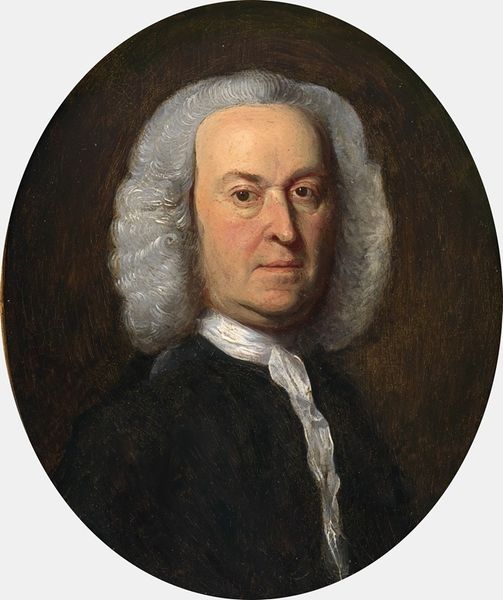
painting, oil-paint
#
portrait
#
portrait
#
painting
#
oil-paint
#
intimism
#
history-painting
#
academic-art
#
rococo
Dimensions: 88 x 114 cm
Copyright: Public domain
Curator: Before us, we have Maurice Quentin de La Tour's "Portrait of Philibert Orry de Vignory," completed in 1737. It currently resides in the Louvre, Paris. Editor: My first impression is one of subtle power. The man's relaxed pose, combined with the dark, almost monochromatic color palette, creates a very intriguing visual hierarchy. What do you make of it formally? Curator: Indeed. Notice how the composition relies heavily on the contrast between the darkness of Orry's attire and the lightness of his face and wig, creating a focal point. La Tour also used texture masterfully; observe how the smoothness of Orry's face is offset by the elaborate, swirling textures of his wig and the plushness of his velvet coat. The implied textures play a crucial role in defining the subjects identity. Editor: From a historical perspective, the portrait tells a story beyond its immediate likeness. Philibert Orry served as Controller-General of Finances under Louis XV. This position of immense power shaped the economic and social fabric of France. A portrait was definitely about declaring prestige and status. Curator: Precisely, and the formal elements support this reading. His deliberate gaze directed toward the viewer suggests an invitation and underscores a keen intelligence. Then the presence of the substantial tome in his hand further alludes to his erudition and responsibility, reinforcing his influential social standing. Editor: Consider, too, how the painting presents an idealized image. La Tour seemingly smooths the sharp edges, creating an aura of sophistication while, simultaneously, masking the complex and contested policies enacted by Orry that deeply impacted French society. The dark velvet cloak speaks not of frugality or need, but hints instead at decadence during times of reform and fiscal management. Curator: That’s quite interesting. But without that dark contrast in his clothes against the whites of his lace and wig, the dynamism of the piece would fail and fall completely flat. The details highlight not opulence as a message, but his position of authority and importance. Editor: I agree. However, the formal dynamics and the socio-political are in lockstep here. So, we can conclude by saying this portrait presents a compelling, multifaceted study of power and representation in the Rococo era. Curator: Indeed. An artistic triumph which displays authority not only through subject, but with its intricate and intelligent visual structures as well.
Comments
No comments
Be the first to comment and join the conversation on the ultimate creative platform.
